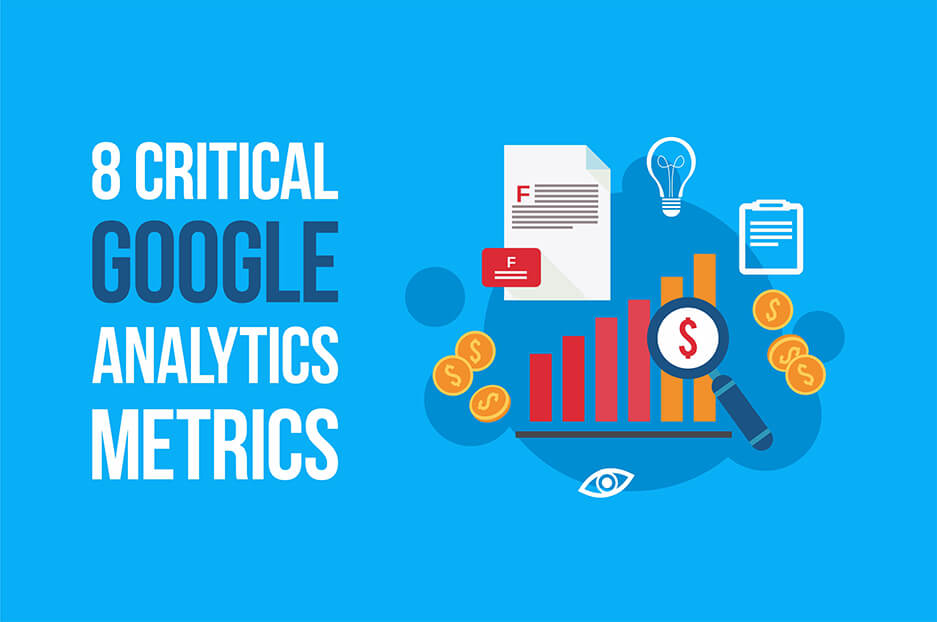Currently, most of the companies and commercial organizations have their own websites. In fact, some of them could be considered works of art. They are modern, attractive, and easy to navigate. However, you should not judge a website by its cover. Even creating a unique web design can’t guarantee you’ll make the profits you want. To make your website be a real success, you need to engage seriously in the data and analytics. Though many underestimates its importance, web analytics helps to improve website performance.
No doubt, Google Analytics is one of the most effective tools to understand your audience and their tastes. With it, you can identify what areas need to be tweaked to perform better, and to attract more customers to your business. Here’s our list of the most important Google Analytics metrics you should be tracking on a regular basis.
Key Google Analytics metrics to track
-
Users
This metric gives you the understanding of how many people visit your website, that is, the total number of visitors. These figures are important because they point to the effectiveness of your marketing strategy.
-
Average session duration
This is one of the most important Google Analytics metrics that shows the amount of time a person spends on a website. Your main goal is to increase the session duration measure by providing interesting and useful content. Longer sessions mean that users are more engaged. Besides, the average session duration provides a SEO benefit, as Google considers it in ranking your website in their search engine result pages.
-
Bounce rate
Bounce rate is essentially the percentage of people who browse just one page on your website and leave it without clicking on any other pages. It doesn’t provide you with the reasons why visitors are leaving. However, the most common factors that influence this metric are: slow loading pages, poor navigation, a bad first impression, etc. Keep these in mind when you are taking actions to lower bounce rate. It also should be noted that a high bounce rate isn’t always bad (For example, your visitor can find exactly what they need on that one page). It only matters if the bounce rate impacts your traffic.
-
Conversions
The conversion rate metric in Google Analytics is another important factor that can have a significant impact on your profits. It tells you how well you convince visitors to perform a desired action. You may have different conversion “goals” on your website (sale, mailing subscription, shares, and many more). The conversion rate indicates how often and how much these goals are achieved. The higher the numbers, the better!
-
Traffic source
Another important report to know is where your traffic is coming from. Again, this information is available by using Google Analytics. With this, you can see exactly how visitors find your website (via search engines, via a link on another website, via a social media link, or by typing the URL of your website in the address bar of the browser). Each traffic source is crucial. You need to keep track of the most and less popular channels to your site and take appropriate actions to increase your traffic.
-
Top pages
Knowing which pages get the most traffic is essential. The website content report gives a brief survey of the most viewed pages and sections on the website. This allows you to assess the value of your content and learn more about your visitors’ interests. If you have this important data, you can know what your audience likes best and provide more material like that.
-
Locations
Do you know where most of your website users are from? In Google Analytics, you can easily find out this data by country, city, etc. This is useful information when developing marketing strategies, or in case you have serious doubts about whether your website needs to be in multiple languages.
-
Type of device
Tablets, smartphones, and other mobile devices are incredibly rising in popularity. In the Overview section, you'll see the number of visitors who came to your site through one of three types of devices: desktop, tablet, or mobile. Moreover, the brand of phone or tablet is also an important factor, since different devices have different screen sizes and browsers. Make sure that your website performs well across all major devices. Your website should be entirely responsive to ensure the optimal user experience.
With the Google Analytics tools, it seems you can know everything about your visitors, and you should be tracking at least some website metrics. This critical data can help you make noticeable improvements to the web content you produce, drive more traffic to your site and increase conversions.
There so many ways to make your website truly successful. Find out them right now by addressing to our seasoned website development company!

